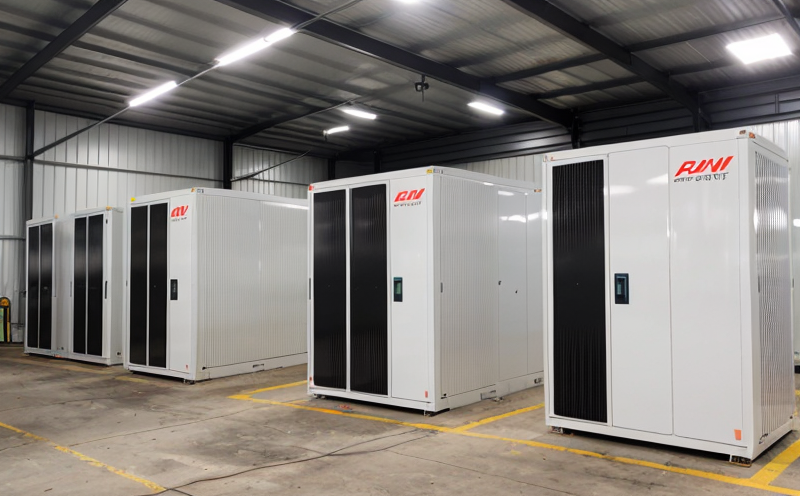IEC 60896 Stationary Lead-Acid Battery Testing
The IEC 60896 series of standards provides comprehensive guidelines for stationary lead-acid batteries, ensuring their safety, performance, and reliability. This standard is particularly crucial in sectors such as energy storage systems (ESS), telecommunications, uninterruptible power supplies (UPS), and grid stabilization. The stringent requirements laid out by IEC 60896 are designed to protect users from potential hazards while maximizing the lifespan and efficiency of these batteries.
Stationary lead-acid batteries are widely used in applications where constant power supply is essential, such as in critical infrastructure like data centers or hospitals. These batteries play a pivotal role in ensuring uninterrupted service during unexpected outages, thereby enhancing reliability and safety. The testing protocols prescribed by IEC 60896 cover a wide range of parameters including electrical characteristics, thermal stability, mechanical integrity, and chemical composition.
Compliance with this standard ensures that the batteries meet international quality and safety benchmarks, which is critical for manufacturers looking to penetrate global markets. For R&D engineers and quality managers, adhering to IEC 60896 not only guarantees product reliability but also aligns with industry best practices. The testing process involves rigorous procedures aimed at identifying any potential defects or performance shortfalls early in the development cycle.
The testing encompasses a series of critical steps that ensure battery integrity and safety. These include electrical tests to assess capacity, internal resistance, and voltage stability; thermal cycling tests to evaluate endurance under varying temperatures; impact tests to gauge structural resilience against physical shocks; and chemical analysis for assessing electrolyte purity and impurity levels.
For procurement teams, ensuring compliance with IEC 60896 is a strategic decision that reduces risks associated with substandard products. By selecting batteries that meet this standard, organizations can minimize the chances of equipment failures leading to downtime or safety incidents.
Applied Standards
| IEC 60896 Series | Description |
|---|---|
| IEC 60896-1 | General Requirements for Stationary Lead-Acid Batteries |
| IEC 60896-2 | Electrical Characteristics of Stationary Lead-Acid Batteries |
| IEC 60896-3 | Thermal Stability and Mechanical Integrity Tests |
| IEC 60896-4 | Cyclic Life Testing of Stationary Lead-Acid Batteries |
| IEC 60896-5 | Chemical Analysis and Impurity Levels |
Environmental and Sustainability Contributions
The rigorous testing protocols outlined by IEC 60896 contribute significantly to environmental sustainability. By ensuring that lead-acid batteries meet stringent safety and performance criteria, this standard helps minimize the risk of hazardous materials being released into the environment through improper disposal or misuse.
Stationary lead-acid batteries are recyclable, and compliance with IEC 60896 facilitates a more efficient recycling process. This reduces the demand for new raw materials, thereby lowering the carbon footprint associated with battery production. The testing procedures also promote the development of longer-lasting batteries, which in turn supports sustainable energy storage solutions.
For organizations committed to sustainability, meeting these standards not only enhances their reputation but also aligns them with global environmental initiatives aimed at reducing waste and promoting renewable energy adoption.
Use Cases and Application Examples
- Data centers requiring uninterrupted power supply during outages.
- Hospitals needing reliable backup power for critical medical equipment.
- Telecommunications facilities ensuring continuous network operations.
- Renewable energy systems integrating battery storage with solar or wind farms.
- Electric vehicles using stationary batteries as part of their grid integration capabilities.
In all these applications, the reliability and safety provided by IEC 60896-compliant batteries are paramount. The testing ensures that these batteries can withstand harsh operating conditions, thereby extending their useful life and reducing maintenance costs.





